How to play AAC files
This article discussed how you may play audio files you have obtained with a .aac extension. It offers some quick fixes and methods to get AAC playing right now, but also shows how to play with Windows Media Player for those who are interested and gives more player options.
What is AAC?
AAC, or Advanced Audio Coding, is often considered to be the successor of the MP3 format. This may be true in the market for legal downloads, but not really for music file sharing. However, the AAC format is also used with video (used with MP4 & 3GP container) and it does provide better audio quality than MP3, keeping the bitrate lower. This makes AAC a suitable audio format for portable players like iPods.
Easiest Method - VideoLAN Client for Windows, MAC and Linux
 With the VLC player, you can enjoy your AAC audio files quickly. The player directly supports AAC decoding without the need for DirectShow filters or special codecs to be installed. If you are looking for a quick solution then this is certainly it, but if you want to look at other examples of these players or learn to play with Windows Media Player and store it in your Media Library, then read on.
With the VLC player, you can enjoy your AAC audio files quickly. The player directly supports AAC decoding without the need for DirectShow filters or special codecs to be installed. If you are looking for a quick solution then this is certainly it, but if you want to look at other examples of these players or learn to play with Windows Media Player and store it in your Media Library, then read on.
You can get VLC for Windows from this URL.
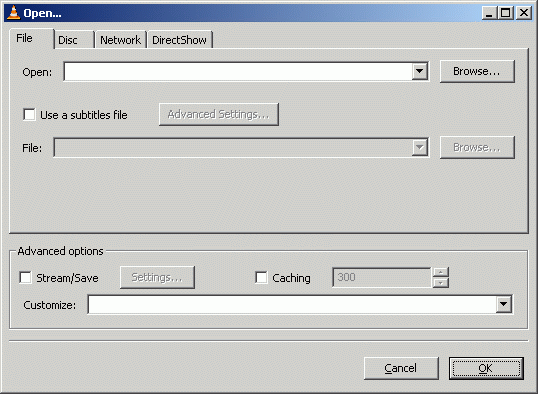 Click File and click the Open File option.
Click File and click the Open File option.Now, click the Browse button next to the first white line at the top of the window with title "Open.." and navigate through your harddrive for the AAC file you wish to listen to and select it. After you have selected the file, click OK and VLC will start playing the AAC audio you chose.
For other Operating Systems...
Mac: http://www.afterdawn.com/software/alternative_platforms/mac_software/vlc_for_mac.cfm
Linux: http://www.afterdawn.com/software/video_software/video_players/vlc_linux.cfm
Another Player with Direct Support for FLAC - Foobar 2000
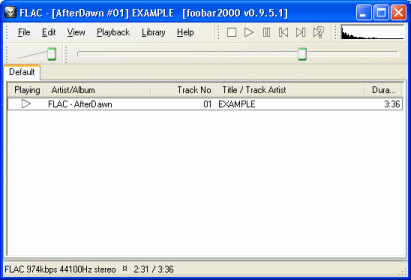 One of the most excellent audio players and converters available is Foobar 2000. It is available as a free download from AfterDawn and it natively supports the Advanced Audio Coding (AAC) format. It also will allow you to easily convert it to another format or edit the tag information.
One of the most excellent audio players and converters available is Foobar 2000. It is available as a free download from AfterDawn and it natively supports the Advanced Audio Coding (AAC) format. It also will allow you to easily convert it to another format or edit the tag information.Download Foobar 2000 from AfterDawn at: http://www.afterdawn.com/software/audio_software/audio_players/foobar2000.cfm
iTunes
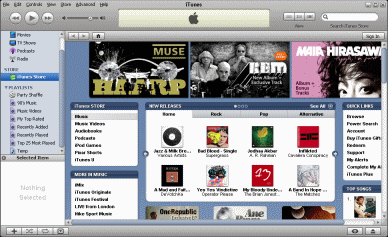 Of course, Apple Inc. has a big hand in the AAC audio format, so it goes without saying that its own iTunes software supports AAC audio natively, as well as DRM-protected audio purchased from the iTunes music store.
Of course, Apple Inc. has a big hand in the AAC audio format, so it goes without saying that its own iTunes software supports AAC audio natively, as well as DRM-protected audio purchased from the iTunes music store.Download iTunes from AfterDawn at: http://www.afterdawn.com/software/audio_software/audio_players/itunes.cfm
Play in Windows Media Player and other DirectShow players?
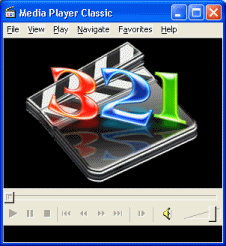 It is totally possible to play AAC files in Windows Media Player and technically any DirectShow-based player. Before we look at Windows Media Player directly, let's take a look at Media Player Classic because with Windows Media Player we will also need to install a plug-in to read the AAC tags correctly.
It is totally possible to play AAC files in Windows Media Player and technically any DirectShow-based player. Before we look at Windows Media Player directly, let's take a look at Media Player Classic because with Windows Media Player we will also need to install a plug-in to read the AAC tags correctly.
The first thing we need is a DirectShow filter. For AAC, you can download the ORBAN AAC Plugin that adds support to DirectShow-based players for AAC, aacPlus, HE-AAC & eAAC+.
Download it from:
http://www.orban.com/plugin/
Download Media Player Classic from:
http://www.afterdawn.com/software/video_software/video_players/media_player_classic.cfm
Install ORBAN AAC Plugin
 Once you have downloaded the ORBAN AAC Plugin, run the installer. It's a completely standard installation; all you have to do is accept the license agreement and keep clicking Next until it is complete. It will place a couple of shortcuts onto your desktop.
Once you have downloaded the ORBAN AAC Plugin, run the installer. It's a completely standard installation; all you have to do is accept the license agreement and keep clicking Next until it is complete. It will place a couple of shortcuts onto your desktop.
This should now make it possible to play your AAC files in Media Player Classic or any other DirectShow-based player yopu have installed on your system.
Now we will take a look at Windows Media Player. The WMP library doesn't support tags with the song information on these types, and many types of files. Luckily, we are able to install a plug-in for Windows Media Player to fix this issue called WMP Tag Support Extender.
Download WMP Tag Support Extender from:
http://wmptagext.sourceforge.net/
Install WMP Tag Support Extender
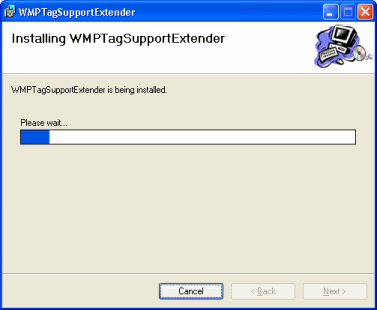 When you have downloaded WMP Tag Support Extender, run the installer. It is just a basic install and requires you to just clicking Next until it is complete, at which time, you can click Close.
When you have downloaded WMP Tag Support Extender, run the installer. It is just a basic install and requires you to just clicking Next until it is complete, at which time, you can click Close.
Now we must configure Windows Media Player to use this add-on.
Configure Windows Media Player for WMP Tag Support Extender - 1
 Open Windows Media Player. If you do not have the latest Windows Media Player, this might not work.
Open Windows Media Player. If you do not have the latest Windows Media Player, this might not work.
Download Windows Media Player by clicking here.
Now open Windows Media Player and you should see something similar to the picture located to the right of this text (clicking will enlarge). Right-click somewhere on the top bar (I have right-clicked beside the Now Playing button) and scroll your pointer down to Tools --> Plug-ins --> WMPTagSupportExtender Plugin. This usually is already selected.
Make sure that there is a tick beside this plug-in or else Windows Media Player won't use it while playing FLAC audio. Now there is another bit of configuring to do. Again, right click in the same spot, navigate to Tools --> Plug-ins --> Options and left-click on Options. This will open Windows Media Player Options in the Plug-in tab.
Configure Windows Media Player for WMP Tag Support Extender - 2
 In the Plug-in tab in options you will see a list underneath Category. As you can see in my picture (click to enlarge) you need to click Background. Now from the list that appears on the right, click on WMPTagSupportExtender (don't untick the box, click the text) and then move the mouse below to the Properties button and click it. This will now open a new window.
In the Plug-in tab in options you will see a list underneath Category. As you can see in my picture (click to enlarge) you need to click Background. Now from the list that appears on the right, click on WMPTagSupportExtender (don't untick the box, click the text) and then move the mouse below to the Properties button and click it. This will now open a new window.Configure Windows Media Player for WMP Tag Support Extender - 3
 Now as you can see in my picture (click to enlarge), a new Window will pop-up with settings for WMP Tag Support Extender. From here you can change some of the Read/Write options for tags. I recommend selecting "Allow Write" and then selecting both the options available to you below it, even though this plug-in doesn't allow you to write tags to AAC in Windows Media Player, just read.
Now as you can see in my picture (click to enlarge), a new Window will pop-up with settings for WMP Tag Support Extender. From here you can change some of the Read/Write options for tags. I recommend selecting "Allow Write" and then selecting both the options available to you below it, even though this plug-in doesn't allow you to write tags to AAC in Windows Media Player, just read.
Once you are done, click "Refresh Now" to refresh your library, then click OK.
Note: We have had trouble getting tags to work with the latest version of Windows Media Player 11, even trying the register DLL workaround. Hopefully an update will fix this.
Finally
This guide set out to help you play your AAC files, we hope we have accomplished that on this guide. If you have any questions or need help, please visit our Discussion Forums for assistance.
Version History
v1.0 - First published by Dela (23/03/2008)
Written by: James Delahunty

